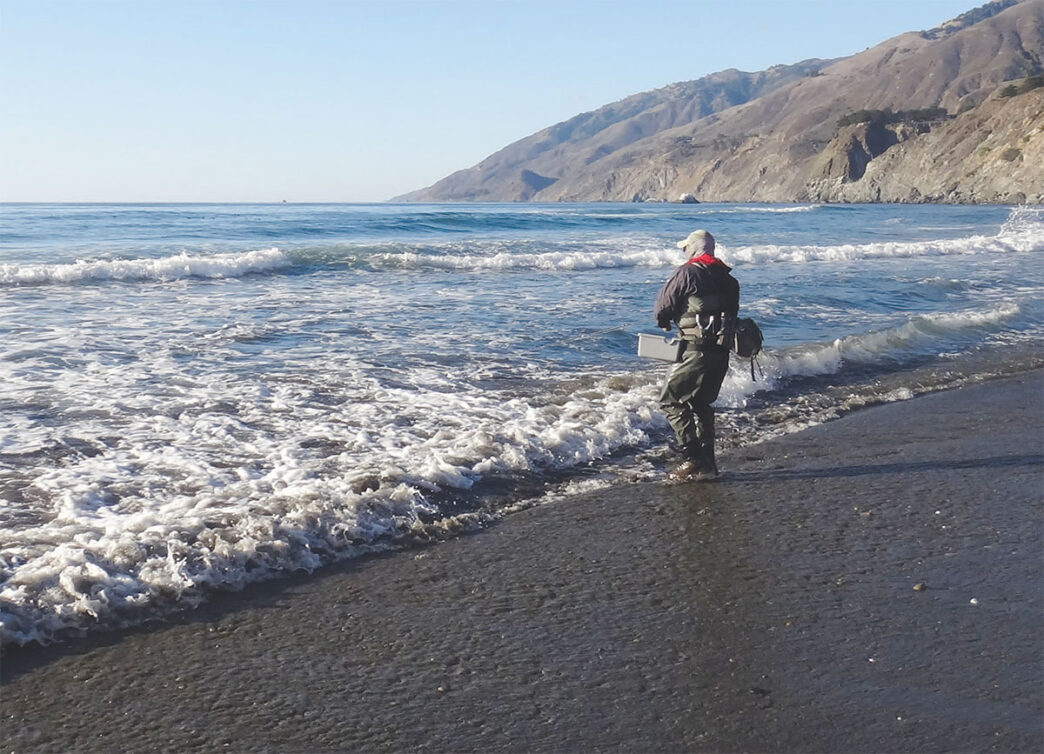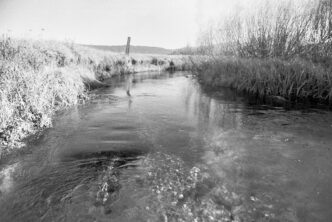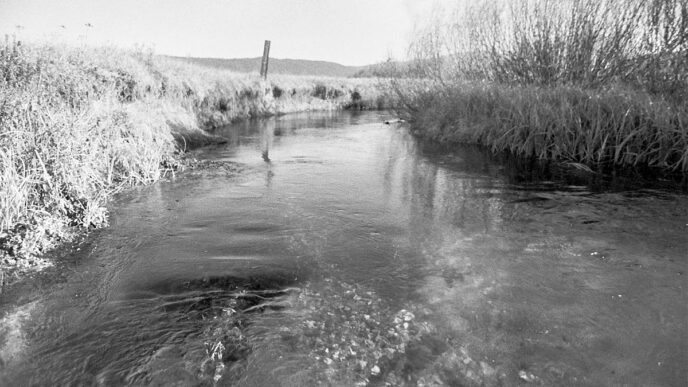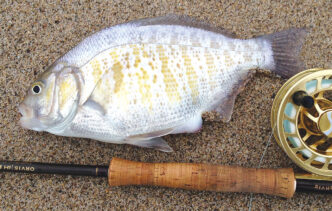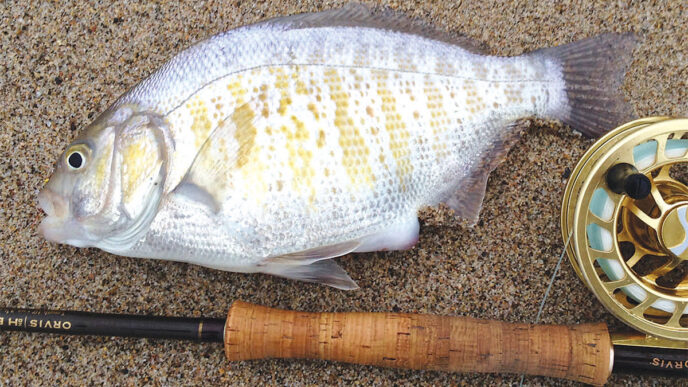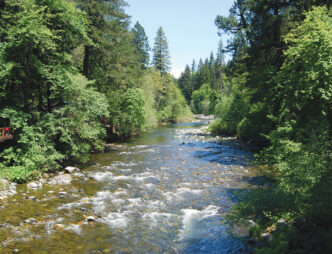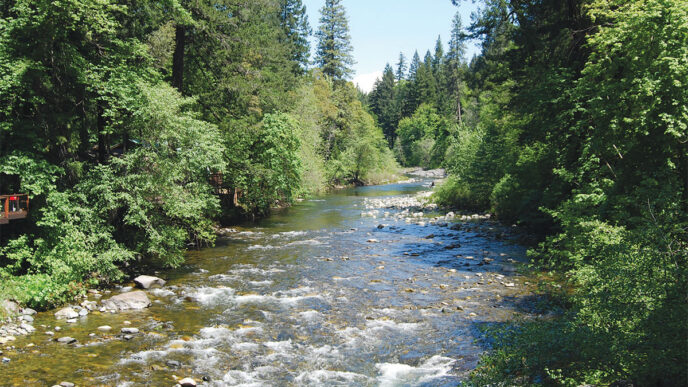Early morning. The coast road is salted and barren north of Cambria. Pink light tinges the low peaks of the Santa Lucia. I park on a gravel shoulder, unload my pack and rod, squeeze through the access turnstile allowing passage through the barbed wire fence, then move swiftly down the Hearst bull pasture to the bluff. I pause to take it all in. It is a small crescent of a beach. No more than a mile long. Typical of the beaches along this wrinkled and rocky section of coast. On the north end, a broken headland projects to block the prevailing northwesterly. And a similar point to the south. Sheltered from the wind, it is a good casting beach. I look for structure — gravel spots; humps; current rips moving straight out from the beach, indicating deeper water; convergences where intersecting waves indicate a trough. I watch the waves rise, claw up the steep beach, then recede.
Not a soul around.
There is a strong current rip flowing out from the center of the crescent. It is the most outstanding water structure of the beach. I figure the fish will gather there, if there are any. I check my watch. Plenty of time, with the tide peaking in two and a half hours, at 10:30 A.M. Morning tides are best. Today will be a high tide of slightly more than five feet, with a moderate swell at a quick interval. A quick interval means the water will stay up and working. The sea beyond the cove is calm, spread out like milk to the horizon. There is the hint of an offshore breeze. Nearly perfect conditions, and rare, because this is normally a windy coast. Why I like the big rod here. One reason.
I admit that I am a saltwater junkie. Summers, I guide for trout, far to the north and far from the sea. Yet I am anadromous to California salt water and return every year to winter at Morro Bay, on the Central California coast. Steelhead are ghosts here, and trout nearly so. Still, there is the ragged, lonesome shore
stretched between the town and the Big Sur highlands — serrate and broken coastline secreting all the elements that stack up to world-class fishing, by my own standards. Bold, inspiring scenery. Solitude. Moving water that requires reading. A reliable quantity of sporty fish willing to eat a fly. In this case, the fish are barred surfperch, mainly. But there are others. On this very beach I caught a giant starry flounder, close to ten pounds. I’ve caught lemon sole, halibut, steelhead, striped bass, leopard sharks, guitarfish — yet they are the odd fish and not the expected. Far more common are the surfperch, with barred perch filling about 90 percent of the catch. Yet there is always potential for the exotic.
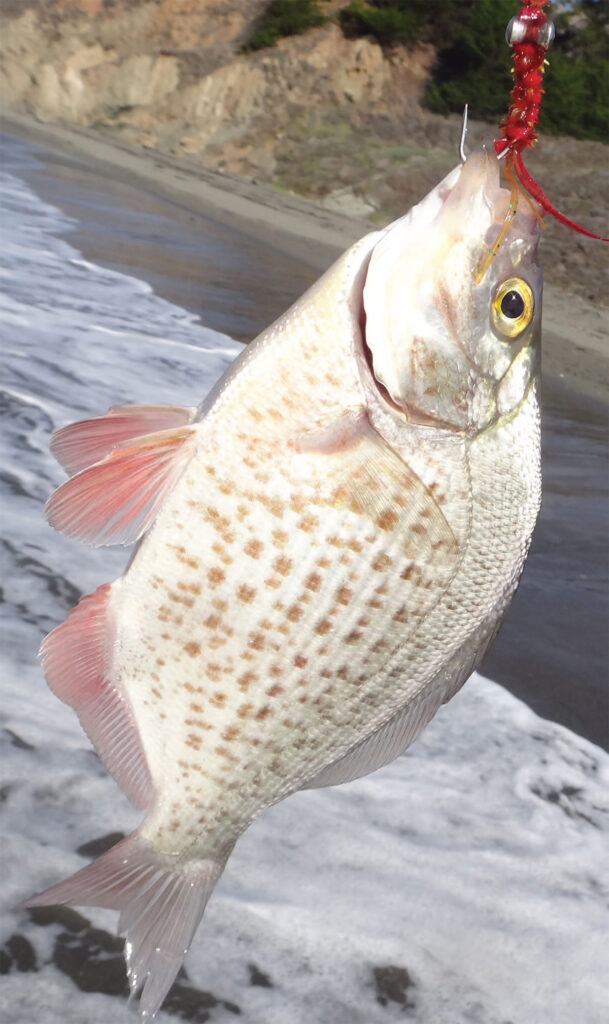
As a brawler, pound for pound, California barred surfperch will go head to head with anything. The world record at close to five pounds came from the area I fish, though most are one and a half to two and a half pounds, with some bigger fish in the mix. A three-pound barred perch will convert you. Sand crabs (mole crabs) are a major item on the barred surfperch menu, and these fish have evolved considerable muscle for feeding on sand crabs in the turbulent surf zone. They are not overgunned by a light Spey rod.
The armored, teardrop-shaped sand crabs are difficult to imitate, and though some claim to do so, I’ve yet to try a crab pattern that works well for me. Surfperch see a lot of sand crabs and can be selective about imitations. They usually won’t eat one that does not look and act exactly right. That’s one of the things I love about barred perch — they are as canny as any wild trout. Fortunately, they are also fond of shrimp, worms, and small baitfish and don’t seem as picky about imitations. Clousers work well, but also the “Comet” style flies, which allows for some elegant designs. Root-beer colorations. Combinations of olive and vermillion. There is a Big Sur Shrimp tied to the end of my 30-inch leader. The leader is simple: a 15-inch butt of stiff, 20-pound-test fluorocarbon with 15 inches of 12-pound-test mono spliced to it. I like the bit of stretch that the mono tippet gives. The fly swings on a Loop Knot.
The rip is out in front of a gravel hump. I start there, dump the line for a long cast. I like the two-hander — a 12-foot 6-inch 5/6-weight Spey — it’s a cannon in the surf, set up with a fast-sink tip integrated with a medium-sink running line. I throw the whole line.
Not long into it, I feel a tapping grab, and the first fish succumbs quickly. A shiner perch, about the size of my hand, big-eyed, round, and bright as a new hubcap. A good sign. There’s life. A few casts later, I hook something that I know is not a perch. The rod is a question mark and the line well into the mono backing. I think it’s a leopard shark. It leaps from the rough surf, a silver arc, and shows itself to be a steelhead, about eight pounds, I figure. It goes bananas, ripping off some more line, then jumps again out in heavy surf and throws the hook.
I’m shaken. I step back from the water. A triad of vultures ride a thermal above the wind-tortured cypress atop the bluff. Perhaps the little trace from the hills emptying to the cove, now a streak of dry gravel, was the steelhead’s natal stream. I wonder if the rains will come. I am almost glad the steelhead got away.
I make another half dozen casts to the shoulder of the rip, and another fish loads the rod — it feels like a heavy one. I figure I’ve hit the jackpot on steelhead, but the fish doesn’t jump, it bulldogs. I finally work it up into the skim. A striped bass — I’m surprised — about a four-pounder. I admire it and slip the hook quickly. There should be more, and I fish fast, expectant, yet a dozen casts, to both sides of the rip, and nothing. I wind in and retreat to a driftwood log up against the toe of the bluff and take a break.
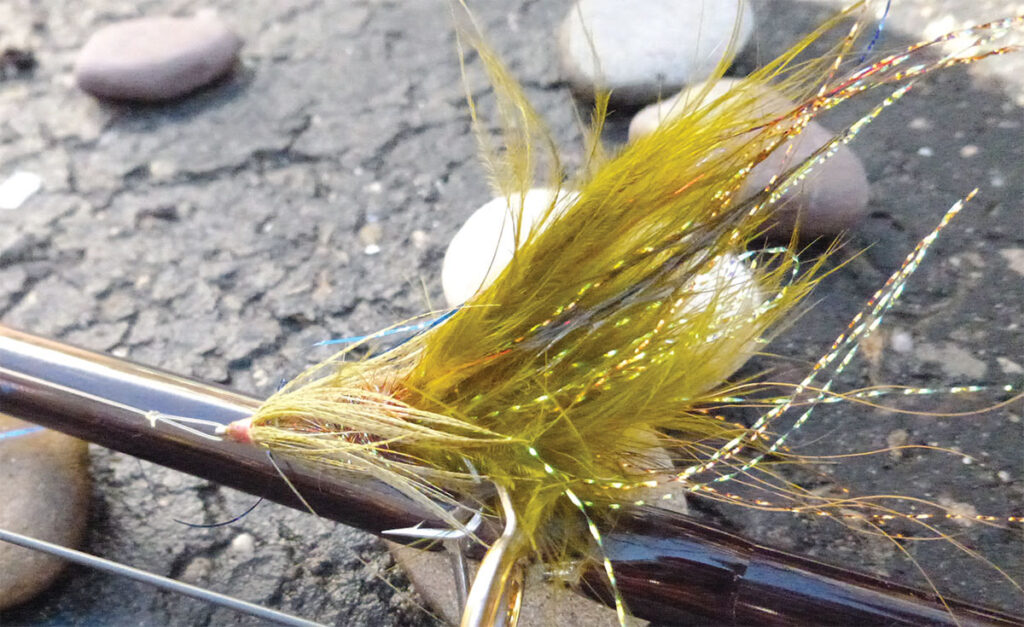
The Big Sur headlands rise abrupt and desolate from the brightening sea, just to the north. It is as wild and lonesome and desolate as any place I’ve fished.
The water rises to high tide. The rip looks even better, the water up and holding. I walk back down and get to it. Things look right, and I let the cast go. By the time I’ve gathered the slack, the fly has reached bottom, and the first barred perch of the day finds it. And then the perch are there, and fairly steady until an hour past the tide. I catch a handful, shouldered, deeply bronzed, mature fish. And then they are gone.
The wind comes in with the tide and it is already whitecapping on the outside. I climb the trail leading up the bluff toward the coast road. A young woman on her way down to the beach greets me on the trail. She is lovely, sun-streaked and browned, accompanied by a friendly Lab.
She smiles, stops, looks out to the sea, and says: “Isn’t it the best day ever!” She seems confident in that, her words a statement, not a question. And though in some circumstances her greeting might be considered odd, in the moment, it makes perfect sense, and I am in accord.
“Yes,” I say, “I would certainly consider this one of them.”




